Related Research Articles
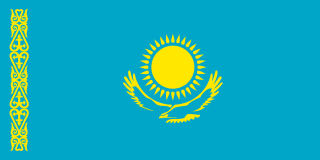
Kazakhstan, officially the Republic of Kazakhstan, is a landlocked country mostly in Central Asia, with a part in Eastern Europe. It borders Russia to the north and west, China to the east, Kyrgyzstan to the southeast, Uzbekistan to the south, and Turkmenistan to the southwest, with a coastline along the Caspian Sea. Its capital is Astana, while the largest city and leading cultural and commercial hub is Almaty. Kazakhstan is the world's ninth-largest country by land area and the largest landlocked country. It has a population of 20 million and one of the lowest population densities in the world, at fewer than 6 people per square kilometre. Ethnic Kazakhs constitute a majority, while ethnic Russians form a significant minority. Officially secular, Kazakhstan is a Muslim-majority country, although ethnic Russians in the country form a sizeable Christian community.

Kazakhstan, the largest country fully within the Eurasian Steppe, has been a historical crossroads and home to numerous different peoples, states and empires throughout history. Throughout history, peoples on the territory of modern Kazakhstan had nomadic lifestyle, which developed and influenced Kazakh culture.
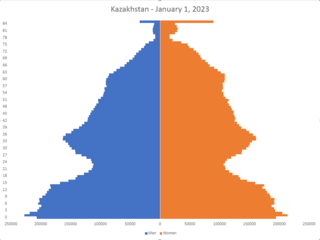
The demographics of Kazakhstan enumerate the demographic features of the population of Kazakhstan, including population growth, population density, ethnicity, education level, health, economic status, religious affiliations, and other aspects of the population. Some use the word Kazakh to refer to the Kazakh ethnic group and language and Kazakhstani to refer to Kazakhstan and its citizens regardless of ethnicity, but it is common to use Kazakh in both senses. It is expected that by 2050, the population will range from 23.5 to 27.7 million people.

Astana, previously known as Akmolinsk, Tselinograd, Akmola, and most recently Nur-Sultan, is the capital city of Kazakhstan.

Kazakh or Qazaq is a Turkic language of the Kipchak branch spoken in Central Asia by Kazakhs. It is closely related to Nogai, Kyrgyz and Karakalpak. It is the official language of Kazakhstan and a significant minority language in the Ili Kazakh Autonomous Prefecture in Xinjiang, north-western China, and in the Bayan-Ölgii Province of western Mongolia. The language is also spoken by many ethnic Kazakhs throughout the former Soviet Union, Germany, and Turkey.

Almaty, formerly known as Alma-Ata, is the largest city in Kazakhstan, with a population of over two million. It was the capital of Kazakhstan from 1929 to 1936, while the country was an autonomous republic of the Soviet Union, then from 1936 to 1991, a union republic and finally from 1991, an independent state. In 1997, the government relocated the capital to Akmola.

The Kazakhs are a Turkic ethnic group native to Central Asia and Eastern Europe, mainly Kazakhstan, but also parts of northern Uzbekistan and the border regions of Russia, as well as northwestern China and western Mongolia. The Kazakhs arose from the merging of the medieval tribes of Turkic and Mongolic origin in the 15th century.
Music of Kazakhstan refers to a wide range of musical styles and genres deriving from Kazakhstan. Kazakhstan is home to the Kazakh State Kurmangazy Orchestra of Folk Instruments, the Kazakh State Philharmonic Orchestra, the Kazakh National Opera and the Kazakh State Chamber Orchestra. The folk instrument orchestra was named after Kurmangazy Sagyrbayuly, a well-known composer and dombra player from the 19th century.
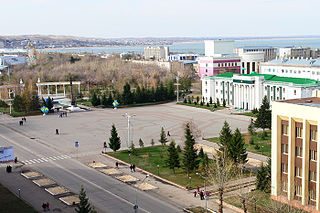
Kokshetau, formerly known as Kokchetav is a lakeside city in northern Kazakhstan and the capital of Akmola Region (oblys), which stretches along the southern shore of Lake Kopa, lying in the north of Kokshetau Hills, a northern subsystem of the Kokshetau Uplands (Saryarka) and the southern edge of the Ishim Plain. It is named after the Mount Kokshe.

The Mäjilis of the Parliament of the Republic of Kazakhstan, commonly referred to as Mäjilis or Mazhilis is the lower house of the Parliament of Kazakhstan, alongside the upper house Senate. Together, they form the national bicameral legislature of Kazakhstan, responsible for enacting legislation. Established by the Constitution of Kazakhstan following the 1995 constitutional referendum, the Mäjilis was first convened in 1996. The chamber plays role in the legislative process, debating and passing laws, where lawmakers discuss key issues facing the country and propose solutions to address them by representing the interests of constituents.

Traditional Kazakh cuisine is the traditional food of the Kazakh people. It is focused on mutton and horse meat, as well as various milk products. For hundreds of years, Kazakhs were herders who raised fat-tailed sheep, Bactrian camels, and horses, relying on these animals for transportation, clothing, and food. The cooking techniques and major ingredients have been strongly influenced by the nation's nomadic way of life. For example, most cooking techniques are aimed at long-term preservation of food. There is a large practice of salting and drying meat so that it will last, and there is a preference for sour milk, as it is easier to save in a nomadic lifestyle.

A jüź is one of the three main territorial and tribal divisions in the Kypchak Plain area that covers much of the contemporary Kazakhstan. It represents the main tribal division within the ethnic group of the Kazakhs.
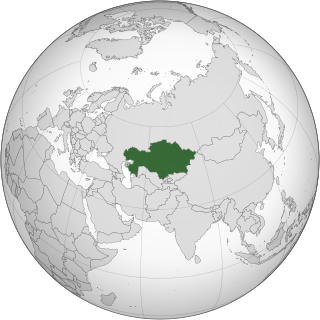
The history of the Jews in Kazakhstan connects back to the history of Bukharan and Juhuro Mountain Jews. Kazakh Jews have a long history. At present, there are approximately several thousand Jews in Kazakhstan.
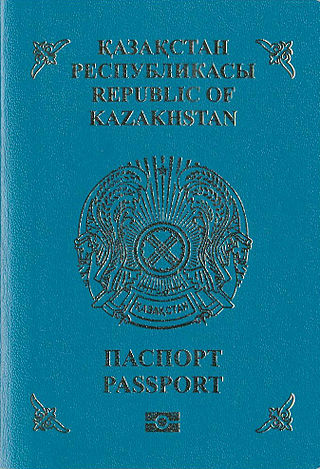
Kazakhstani passports are issued to citizens of the Republic of Kazakhstan to facilitate international travel. Within the Republic of Kazakhstan citizens are required to use internal identification card which can also be used for travel to the Russian Federation, Kyrgyzstan and Albania. The Kazakh Ministry of Justice started issuing biometric passports on 5 January 2009.

Kazakhstan–Russia relations are the bilateral foreign relations between Kazakhstan and the Russian Federation. Kazakhstan has an embassy in Moscow, a consulate-general in Saint Petersburg, Astrakhan, and Omsk. Russia has an embassy in Astana and consulates in Almaty and Oral.
The Internet in Kazakhstan is growing rapidly. Between 2001 and 2005, the number of Internet users increased from 200,000 to 1 million. By 2007, Kazakhstan reported Internet penetration levels of 8.5 percent, rising to 12.4 percent in 2008 and 34.3% in 2010. By 2013, Kazakhstani officials reported Internet penetration levels of 62.2 percent, with about 10 million users. There are five first-tier ISPs with international Internet connections and approximately 100 second-tier ISPs that are purchasing Internet traffic from the first-tier ISPs. As of 2019, more than 75% of Kazakhstan's population have access to the internet, a figure well ahead of any other country in Central Asia. The Internet consumption in the country rose from 356 PB in 2018 to 1,000 PB in 2022.
References
- ↑ Casserium (2023-10-06). "English: 10 000 popular Kazakh names and surnames of Kazakhstan (2023). Қазақстан Республикасы Ұлттық статистика бюросының мәліметі бойынша" (PDF). Retrieved 2023-10-13.